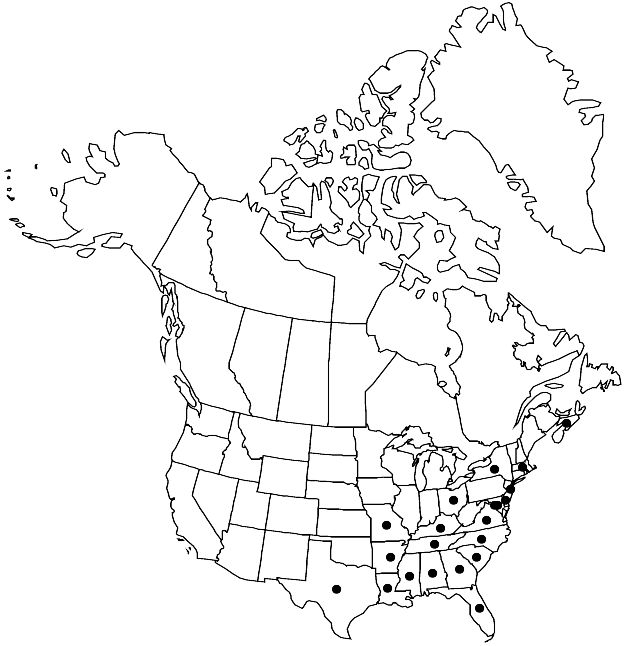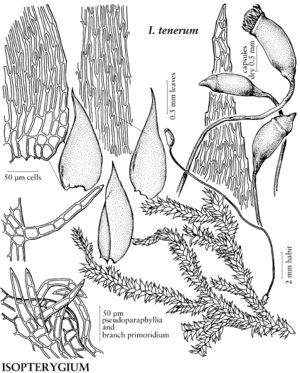Isopterygium tenerum
J. Linn. Soc., Bot. 12: 499. 1869.
Plants small, in thin to dense mats, whitish to yellowish. Stems to 2(–5) cm, 0.5–1.5(–3) mm wide. Leaves erect-spreading, not or slightly wrinkled when dry, ovate to lanceolate, 0.7–1.8 × 0.2–0.6 mm; margins plane, serrulate to entire proximally, serrate to serrulate distally, rarely entire throughout; alar cells short-rectangular, quadrate, or transversely elongate, 12–38 × 10–20 µm, region small; medial laminal cells often flexuose, linear-fusiform, 52–151 × 5–8 µm. Specialized asexual reproduction sometimes present as filaments on stems, multicellular, green or brown, simple or branched, often more than 0.5 mm, cells papillose. Seta yellow to reddish brown, 0.5–1.5 cm. Capsule cernuous, rarely erect, light brown to orange-brown, 0.5–2 mm; operculum conic-apiculate to obliquely short-rostrate. Spores 9–14 µm.
Phenology: Spores 9-14 µm, mature spring–summer.
Habitat: Dry wooded regions, swamps, wet roadside ditches, base of trees, rotten logs, stumps, sandy soil, sedimentary rock
Elevation: low to moderate elevations (0-400 m)
Distribution

N.S., Ala., Ark., Del., D.C., Fla., Ga., Ky., La., Md., Mass., Miss., Mo., N.J., N.Y., N.C., Ohio, S.C., Tenn., Tex., Va., Mexico, West Indies, Central America, South America, s Europe (Italy).
Discussion
Isopterygium tenerum is common in Florida and the Gulf Coast, becoming infrequent northward, occurring in scattered localities to southern New York and disjunct to southern Nova Scotia. The species is extremely variable, and several varieties have been described from North American plants. These varieties, based on leaf shape and length, are believed to be environmental forms and are therefore included in the synonymy. A biometric analysis by P. L. Redfearn (1956) on the stem leaf variation reached a similar conclusion.
Selected References
None.
